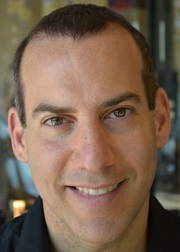You just captured the sexiest, most artistic selfie ever.
You quickly check how the selfie appears on your feed and imagine the best case scenario for what your “friends” will think.
Yup…it looks good enough to post. And so a selfie is born.
Selfie-Bration
Hope grows for a world selfie-bration, or at least something more attention-grabbing than a few sympathy likes.
A selfie knows that his or her life is precious because a selfie only exists as a temporary reflection of its owner.
Life is risky for the selfie. It knows that as a young selfie, life on the wall can get lonely, especially when it’s pushed to the bottom and ignored. A young selfie, however, is hungry to test out what the world has to say.
The selfie relies on a standard diet of likes to stay alive and to feel valued. Comments are a larger feast for the selfie, a gorging on temporary gratification.
Despite it’s limited time to shine, the selfie serves the self tirelessly, always trying its best to reflect the best angle of its owner.
It thrives on feedback, but the selfie is realistic about how much it can do for the self given how quickly newer selfies move in.
Once the world’s first reactions end, the selfie knows that it will soon become lost in a sea of posts as it fades into an under-appreciated archival nursing home of older selfies and food pictures and inspirational quotes and random opinions vying for leftover likes during visitation hours from family and friends.
While the selfie knows that its shelf life for freshness is short, its owner is not usually as clear about this. The owner’s unrealistic expectations for the gratification a selfie is supposed to provide saddens the selfie. What selfie can meet those expectations?
All the selfie can really hope for is a short but memorable off-broadway run filled with ovations of virtual recognition.
The World of Likes…Loves!
Wow. Holy shit! Here they come!
Likes start to gather around the selfie like curious spectators stopping to watch a random street fight. Well, maybe more like a talented street performer or an unexpected rainbow.
The number of “likes” begins to jump, and jump, and jump.
The selfie welcomes with open arms (or at least eyes) the temporary confirmation its owner’s awesomeness, attractiveness, artistic skills, or whatever ticket the selfie is hoping to get validated.
One thing we know is that a selfie isn’t shy. The selfie gladly let’s the shirt buttons covering its ego pop open as it revels in an inflated sense of selfie-worth with every uptick in likes.
The selfie is at its orgasmic peak as random people begin to comment with phrases like “beautiful shot” or simply “WOW.”
“OMG if THAT random guy who’s a photographer came out of the woodwork to comment, I must REALLY be something special,” the selfie thinks to itself.
When the Likes Leave You for Another Selfie
As the day winds down and the likes trickle in like droplets from a broken faucet, selfie-doubt steps in front of the selfie-bration like a bully who doesn’t want to wait his turn.
Don’t people check their phones after work? Where is everyone? What the hell is this shit? Maybe I’m not the greatest selfie.
Yes, inevitably, the likes and comments will stop flowing. Inevitably, the selfie will want more, even a tiny bit more. It might even look to see who of its owner’s most reliable likers haven’t liked it yet to feel more hopeful.
(This is one of my favorite mental games…) To battle the disappointment, the selfie starts to come up with reasons why people would admire him or her without clicking “like.”
Such is life as a selfie.
The Most a Selfie Could Ask for From Its Owner
How much do you expect your selfie to do for you?




